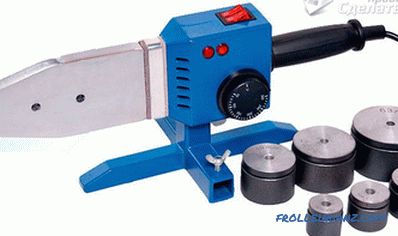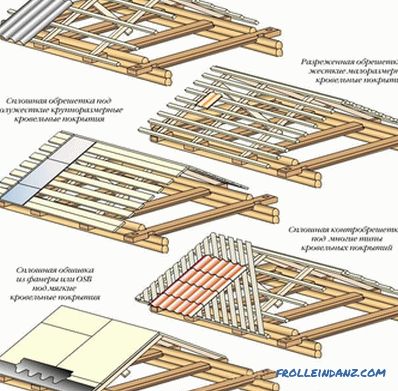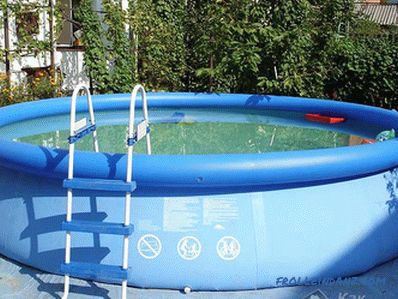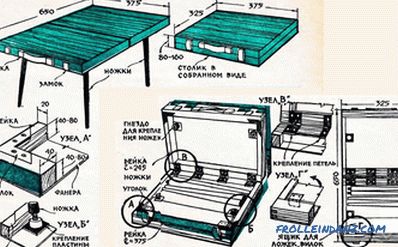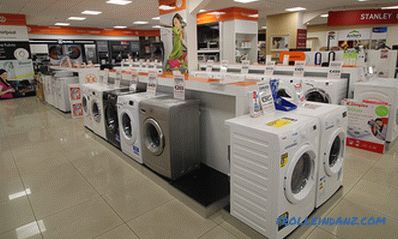So the heating season ended with grief in half, after which the issue of changing batteries came to the fore. Leaked ancient cast-iron radiators, it is time to send for a well-deserved rest, putting in their place something more modern. Private developers, when installing heating, are also often unable to determine the type of radiators. Having heard sellers in stores praising the most popular models, an unknowing buyer is at a loss. And which radiator is better - aluminum or bimetallic, it still does not represent. Perhaps, let's take a look at this question objectively?
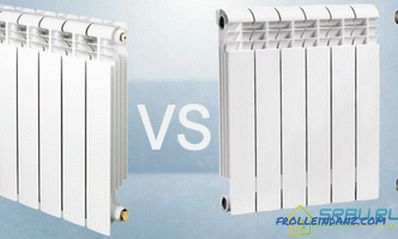
Let's start a comparison of bimetallic and aluminum radiators
What is each type of radiator
1. Aluminum radiators, neat and stylish, consist of several sections connected by nipples. Gaskets, available between sections, give the desired tightness. The ribs, located on the inside, can significantly increase the area of heat release up to 0.5 square meters. Make radiators in two ways. Extrusion method gives cheap and lightweight products of the highest quality (in Europe they do not use this method). More expensive, but more durable are radiators made by casting.
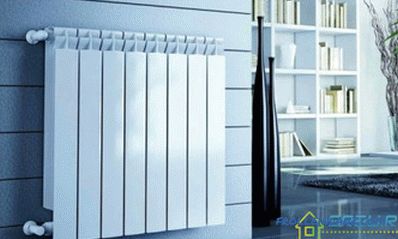
One of the types of aluminum radiators.
2. Bimetallic radiators are made of two different metals. The case, equipped with ribs, is made of aluminum alloy. Inside this case there is a core of pipes through which coolant flows (hot water from the heating system). These pipes are made either from steel or from copper (and the latter are almost never encountered). Their diameter is smaller than that of aluminum models, so there is more chance of clogging.
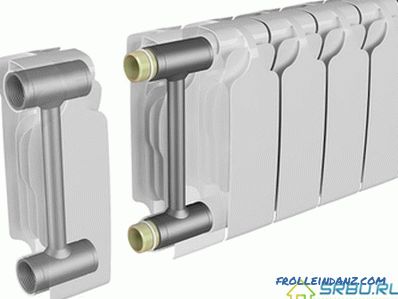
The appearance of a bimetallic radiator is very aesthetic, and the design satisfies the most sophisticated needs. All its steel components are hidden inside.
What will give more heat - bimetal or aluminum?
If we compare the heat transfer, then aluminum batteries will immediately take the lead. They have one section can give more than 200 watts of thermal energy. Moreover, half of the heat is given in the form of radiation, and the second half - by the convection method. Thanks to the ribs protruding from the inside of the sections, the heat output is still increasing. So in this regard, there is no equal to aluminum. Note that he also has a minimum thermal inertia. I switched on the batteries - and after 10 minutes the room is already warm. In a private house, it allows you to save money.
Now consider bimetallic devices. Heat transfer from one section depends on the model and manufacturer. It is slightly lower than that of the all-aluminum radiator. After all, the core of steel helps reduce the overall heat transfer, which can be one-fifth less than that of an aluminum radiator of the same dimensions.

As for the method of heat release, it also includes convection and thermal radiation. And their thermal inertia is also small.
Aluminum + | Bimetallic -
About the ability to withstand high pressure (especially hydraulic shocks)
Here, aluminum pumped up - the figures of its working pressure are not very impressive. Only from 6 to 16 (some models up to 20) atmospheres, which may not be enough to withstand pressure surges in central heating. And there will be no rescue from a water hammer at all - the batteries will burst like empty walnut shells and there will be a big hot flood in the apartment. Therefore you should not risk - in high-rise buildings do not put aluminum radiators.
Bimetallic models, having a strong steel core inside, are well prepared for the pressure head. From 20 to 40 atmospheres is quite good. Even if the crane at the pumping station will be closed or open at lightning speed in an accident, they will not be damaged. It is bimetallic radiators that are most reliable with unstable pressure in the system, when water hammer is likely to occur.
This parameter is important if you choose radiators for an apartment with a centralized heating system. If you choose these radiators for a private house, then this parameter is not a minus for aluminum radiators, since there is no excessive pressure in the local heating system.
Aluminum + - | Bimetallic +
Which is better bimetallic radiators or aluminum with respect to the coolant
Aluminum with pleasure enters into various chemical reactions, so for him the water in central heating - just "treasure". After all, there are so many chemical impurities in it, that from the walls of the battery, soon there can be almost nothing left - corrosion will eat them. As soon as the pH of the hot water flowing in the system exceeds 8 units - expect trouble. But after all, with centralized heating to keep track of this indicator is impossible.And in the process of chemical reactions, aluminum emits hydrogen, which is a fire hazard. Therefore, you certainly need to constantly bleed air from such batteries.
Steel pipes in the middle of a bimetallic radiator are less demanding on the quality of the water flowing through them. After all, steel is not as active chemically as aluminum alloys. Corrosion, of course, gets to it, but not so soon. In addition, manufacturers cover it with a special protective layer. And sometimes use stainless steel, but it is quite expensive. But in any case, the bimetallic radiator is more protected from too active chemical coolant. The only danger is the ingress of oxygen into this water. Then the steel will begin to rust, and very quickly.
Aluminum - | Bimetallic +
Maximum coolant temperature - which radiators have more?
The question is natural - quite often our batteries "burn with fire" so that they don’t you touch. So, aluminum can withstand boiling water up to 110 degrees - this is an average figure. For bimetallic products, this indicator is somewhat higher - 130 degrees. Therefore, they win here.
Aluminum - | Bimetallic +
And what is more reliable, stronger and more durable?
And again, radiators made of two metals take the lead, because they combine the best the qualities of each. Such devices serve for 15-20 years, no less (of course, we are talking about a quality product of reliable brands). Their aluminum counterparts, as a rule, are distinguished by half the service life - up to 10 years.
Aluminum - | Bimetallic +
What is easier to install?
Both aluminum and bimetal are quite comfortable to install, as they weigh a little (compared to same cast iron). For their attachment does not need particularly powerful brackets - even drywall is able to withstand such a small weight. If the pipes are plastic, only a set of keys and fittings is needed for installation. But nevertheless, bimetallic batteries are easier to install - because steel pipes cannot undergo deformation, unlike aluminum - a soft metal.
Aluminum + | Bimetallic +
What is cheaper, which is more expensive
The price of bimetallic radiators is one-fifth or even one-third higher than that of appliances from aluminum. This is quite a significant difference. It is for this reason that bimetal products are not so widespread in our apartments - they are not available to everyone. Bimetallic instruments have a higher hydraulic resistance than aluminum ones. Therefore, more energy is needed to pump hot water. That is, higher operating costs.
And another thing: somewhere four-fifths of all radiators of this type are brought to us from China. This, of course, does not mean that each of them is certainly bad, but sometimes makes you think.
Aluminum + | Bimetallic -
Which radiators for which systems are more suitable
1. Now, having considered and compared the main characteristics of radiators, one can draw conclusions. First, find out which heating radiators are better - aluminum or bimetallic - for an apartment in a high-rise building. It uses central heating.
And this means that:
- The pressure in the system can change dramatically, reaching extreme values. Water hammer possible.
- The temperature will also not be stable, sometimes changing greatly during the heating season and even a day.
- The composition of the coolant is not very clean. There are chemical impurities, as well as abrasive particles. It is hardly possible to speak of a pH not exceeding 8 units.
Based on all this, you can forget about aluminum batteries. Because their central heating system will destroy them. If electrochemical corrosion is not eaten, then the pressure with temperature will be finished. And the water hammer will make the last “test shot”. Therefore, choosing from two types of radiators (aluminum or bimetal), stop only on the latter.
2. Now consider the heating system installed in a private house. A well-working boiler produces a constant low pressure, not exceeding 1.4 to 10 atmospheres, depending on the boiler and the system. There are no pressure surges, and even less water hammer. The water temperature is also stable, and its purity is beyond doubt. There will be no chemical impurities in it, and the pH can always be measured.
Therefore, it is possible to supply aluminum batteries in such an autonomous heating system - these devices will work perfectly. They will cost cheap, have excellent heat transfer, their design is attractive. In stores you can pick up batteries made in Europe. It is preferable to choose models made by casting.Bimetallic batteries are also suitable for those who live in the house itself. If you have the desire and enough money, you can put them.
Just remember that there are a lot of fakes on the market. And if the model (whether aluminum or bimetallic) differs in a suspiciously low price, then you can already be alerted. In order not to be misleading, check that the label of the manufacturer is on both each section and on the packaging (quality and full color).
Video: Installation of aluminum and bimetallic heating radiators
